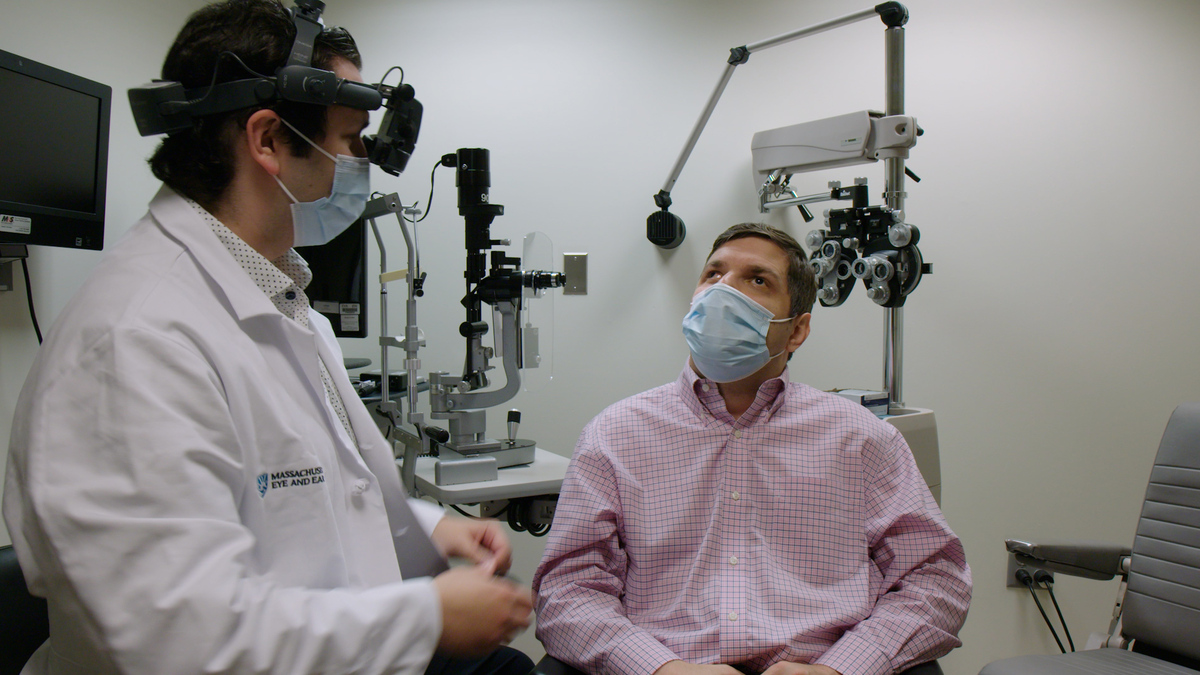A Gene-Editing Experiment Let These Patients With Vision Loss See Color Again

Enlarge this image
Carlene Knight, who has a congenital eye disorder, volunteered to let doctors edit the genes in her retina using CRISPR.
Franny White/OHSU
hide caption
toggle caption
Franny White/OHSU

Enlarge this image
Michael Kalberer
Mass Eye and Ear
hide caption
toggle caption
Mass Eye and Ear

Source: Michael Kalberer
CRISPR is already showing promise for treating devastating blood disorders like sickle disease disease and beta thalassemia. And doctors are trying to use it to treat cancer. But those experiments involve taking cells out of the body, editing them in the lab, and then infusing them back into patients. That’s impossible for diseases like LCA, because cells from the retina can’t be removed and then put back into the eye.
So doctors genetically modified a harmless virus to ferry the CRISPR gene-editor and infused billions of the modified viruses into the retinas of Knight’s left eye and Kalberer’s right eye, as well as one eye of five other patients. The procedure was done only on only one eye just in case something went wrong. The doctors hope to treat the patients’ other eye after the research is complete.
Once the CRISPR was inside the cells of the retinas, the hope was that it would cut out the genetic mutation causing the disease, restoring vision by reactivating the dormant cells.
«We’re thrilled about this,» says Dr. Eric Pierce, director of the ocular genomics institute at Massachusetts Eye & Ear and professor of ophthalmology at Harvard Medical School who’s helping run the experiment testing the approach.
«We’re thrilled to see early signs of efficacy because that means gene-editing is working. This is the first time we’re having evidence that gene-editing is functioning inside somebody and it’s improving — in this case — their visual function,» Pierce says.
The procedure didn’t work for all the patients, who have been followed for between three and nine months. The reasons it didn’t work might have been because their dose was too low or perhaps because their vision was too damaged.

Enlarge this image
Michael Kalberer during a check-up at Massachusetts Eye and Ear.
Mass Eye and Ear
hide caption
toggle caption
Mass Eye and Ear
Michael Kalberer during a check-up at Massachusetts Eye and Ear.
Mass Eye and Ear
But Kalberer, who got the lowest dose, and one volunteer who got a higher dose, began reporting improvement starting at about four to six weeks after the procedure. Knight and one other patient who received a higher dose improved enough to show improvement on a battery of tests that included navigating a maze. For two others, it’s too soon to tell.
None of the patients have regained normal vision — far from it. But the improvements are already making a difference to patients, the researchers say. And no significant side effects have occurred.
Many more patients will have to be treated and followed for much longer, to make sure the treatment is safe and know just how much this might be helping.
The researchers have begun administering a higher dose, which could work better, and eventually plan to start treating children, who have the best chance of benefiting.
They’re also optimistic the vision of the patients treated so far could improve with time.
«When you improve the function of the retina, sometimes there’s a lag for the brain being able to recognize and use that vision,» Pennesi says. «It takes time to learn how to use that improved vision.»
The findings could open the door to using the same approach to treat other diseases where doctors can’t take cells out of the body, including brain disorders like Huntington’s and muscle diseases like muscular dystrophy.
«It’s exciting. The world is our oyster. We almost have too many targets that we can go after,» says Dr. Lisa Michaels, chief medical officer at Editas Medicine, which is sponsoring the study.
For their part, Knight and Kalberer are just thrilled that they can see at least a little better.
«I’m just incredibly honored and privileged to be part of this, and very, very excited to literally, hopefully, see what comes in the future,» Kalberer says.
- Leber congenital amaurosis
- gene-editing
- crispr














Комментарии 0